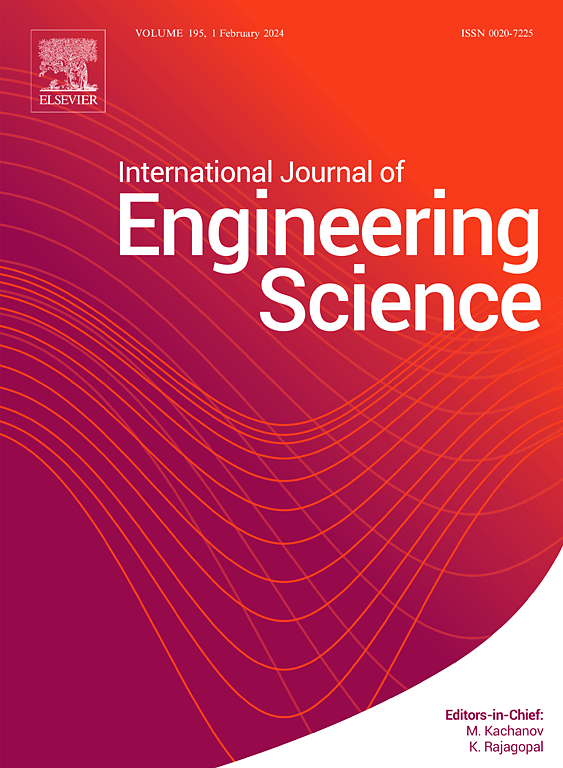Development of a versatile indoor framework for the measurement of tyre compound friction and wear
IF 5.7
1区 工程技术
Q1 ENGINEERING, MULTIDISCIPLINARY
International Journal of Engineering Science
Pub Date : 2025-10-17
DOI:10.1016/j.ijengsci.2025.104402
引用次数: 0
Abstract
Maximising tyre performance requires balancing conflicting targets, grip, wear resistance, and rolling efficiency, while accelerating development. In this context, tribological characterisation at compound level supports faster prototyping and reduces reliance on full-scale testing. Although standards for rubber friction testing exist, they are rarely followed in literature, and procedures are often underreported. This work addresses that gap by presenting the complete development of an experimental framework for rubber friction and wear testing, with particular focus on tyre tread compound, from the definition of functional requirements to the design of a novel linear friction tester and the implementation of a robust testing methodology. The Ground Rubber Interface Performance (GRIP) tester was designed for high versatility and cost-effectiveness. A key feature is the open-access architecture, which allows practical surface management and rapid retooling. A custom back-heating system ensures uniform specimen temperature even under varying test conditions. The methodology focuses on critical but overlooked aspects: specimen conditioning, surface rubberisation, and temperature control. Case studies demonstrate the repeatability of results and the system’s sensitivity to key input parameters. Additional tests confirm the platform’s adaptability to non-tyre tribological applications.
用于测量轮胎复合摩擦和磨损的多功能室内框架的开发
轮胎性能的最大化需要平衡相互冲突的目标、抓地力、耐磨性和滚动效率,同时加速发展。在这种情况下,化合物级的摩擦学特性支持更快的原型制作,并减少对全尺寸测试的依赖。虽然存在橡胶摩擦测试的标准,但在文献中很少遵循,并且程序经常被低估。这项工作通过展示橡胶摩擦和磨损测试实验框架的完整发展来解决这一差距,特别关注轮胎胎面化合物,从功能需求的定义到新型线性摩擦测试仪的设计以及稳健测试方法的实施。地面橡胶界面性能(GRIP)测试仪是为高通用性和成本效益而设计的。一个关键的特点是开放访问架构,它允许实际的表面管理和快速的重新加工。一个定制的背加热系统,确保均匀的试样温度,即使在不同的测试条件。该方法侧重于关键但被忽视的方面:样品调理,表面橡胶化和温度控制。案例研究证明了结果的可重复性和系统对关键输入参数的敏感性。额外的测试证实了该平台对非轮胎摩擦学应用的适应性。
本文章由计算机程序翻译,如有差异,请以英文原文为准。
求助全文
约1分钟内获得全文
求助全文
来源期刊

International Journal of Engineering Science
工程技术-工程:综合
CiteScore
11.80
自引率
16.70%
发文量
86
审稿时长
45 days
期刊介绍:
The International Journal of Engineering Science is not limited to a specific aspect of science and engineering but is instead devoted to a wide range of subfields in the engineering sciences. While it encourages a broad spectrum of contribution in the engineering sciences, its core interest lies in issues concerning material modeling and response. Articles of interdisciplinary nature are particularly welcome.
The primary goal of the new editors is to maintain high quality of publications. There will be a commitment to expediting the time taken for the publication of the papers. The articles that are sent for reviews will have names of the authors deleted with a view towards enhancing the objectivity and fairness of the review process.
Articles that are devoted to the purely mathematical aspects without a discussion of the physical implications of the results or the consideration of specific examples are discouraged. Articles concerning material science should not be limited merely to a description and recording of observations but should contain theoretical or quantitative discussion of the results.
 求助内容:
求助内容: 应助结果提醒方式:
应助结果提醒方式:


